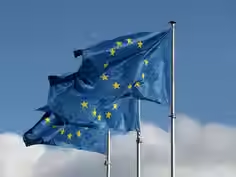The Science Behind Perfect Goalkeeping: How Reaction Time Decides Champions
- Rahmani Khoshnaw

- May 25, 2025
- 3 min read
Khoshnaw Rahmani, JadeTimes Staff
K. Rahmani is a Jadetimes news reporter covering Sport.

The Art and Science of Goalkeeping
Goalkeeping is often described as the most demanding position in football. A goalkeeper’s ability to react within milliseconds can mean the difference between a match-winning save and a heartbreaking goal. But what exactly determines a goalkeeper’s reaction time? The answer lies in a combination of neuroscience, biomechanics, and elite training techniques.
Top goalkeepers, such as Manuel Neuer and Alisson Becker, train extensively to refine their reaction speeds, using cutting-edge techniques backed by science. This article explores the science behind perfect goalkeeping, breaking down the neurological processes, physical conditioning, and mental strategies that allow goalkeepers to make split-second decisions and define championship moments.
The Neuroscience of Reaction Time
A. How the Brain Processes Fast-Paced Stimuli
A goalkeeper’s reaction time depends on how quickly their brain can process visual information and send signals to their muscles. The process follows these steps:
Visual Input: The eyes detect the ball’s movement.
Neural Processing: The brain analyzes the trajectory, speed, and spin.
Motor Response: The brain sends signals to the muscles to react.
Studies show that elite goalkeepers process visual cues up to 30% faster than amateur players. This ability allows them to anticipate shots before the ball even reaches them. Positioning errors as small as six inches can reduce save success rates by 10–15%, highlighting the precision required in top-tier goalkeeping.
B. The Role of Peripheral Vision
Goalkeepers don’t just focus on the ball—they must track multiple moving objects at once, including opposing players, defenders, and the ball’s trajectory. Peripheral vision training enhances their ability to detect threats outside their direct line of sight.
✅ Drills like focusing on central targets while detecting movements in the periphery improve reaction speed.
✅ Wearable eye-tracking technology helps goalkeepers refine their focus during real match scenarios.
Muscle Memory and Reflex Training
A. Manuel Neuer’s Reaction Training
One of the most revolutionary approaches to goalkeeping reaction speed comes from Manuel Neuer, widely regarded as one of the greatest goalkeepers of all time. His training drills focus on rapid reflex development, incorporating:
✅ Facing-away drills, where he turns at the last second to react to shots.
✅ Volleying reaction drills, forcing instant responses to unpredictable ball movements.
✅ Randomized shooting patterns, helping him develop split-second decision-making in chaotic game situations.
By constantly challenging his brain to react to unpredictable movements, Neuer has perfected the art of anticipation-based goalkeeping—reducing his reliance on pure reflexes and enhancing his ability to cut off angles before a shot is taken.
B. Fast-Twitch Muscle Fibers: Explosive Goalkeeping
Goalkeepers rely on fast-twitch muscle fibers, which enable explosive movements. These fibers allow them to:
✅ Dive instantly to block shots.
✅ React to deflections with minimal delay.
✅ Adjust positioning in real time.
Training methods such as plyometric exercises, reaction ball drills, and rapid-fire shooting sessions enhance these fibers, ensuring keepers can execute dynamic movements effortlessly.
The Psychology of Goalkeeping: Mental Speed and Decision-Making
A. Anticipation vs. Reaction
While reaction time is crucial, anticipation often separates great goalkeepers from average ones.
✅ Reading a striker’s foot placement can reveal shot direction.
✅ Observing body posture helps predict whether a player will shoot or pass.
Elite goalkeepers like Manuel Neuer and Alisson Becker use anticipation to position themselves before the shot is taken, reducing the need for last-second reactions. Becker’s dual-task reaction training forces his brain to process multiple stimuli at once, sharpening his ability to react under pressure.
B. Mental Training Techniques
Goalkeepers use visualization and mindfulness to sharpen their reflexes.
✅ Visualization drills involve mentally rehearsing saves before matches.
✅ Mindfulness exercises improve focus and reduce reaction time delays.
✅ AI-driven brain training apps are now used by top clubs to optimize cognitive reflexes.
The Role of Technology in Goalkeeper Training
A. Wearable Sensors and AI Analysis
Modern goalkeepers use wearable sensors to track reaction speed and movement efficiency. AI-driven analysis helps refine their technique by identifying areas for improvement.
✅ Smart gloves measure hand speed and grip strength.
✅ Eye-tracking technology enhances visual processing.
✅ AI-powered movement tracking optimizes diving mechanics.
B. Virtual Reality (VR) Training
VR simulations allow goalkeepers to practice against virtual strikers, improving their ability to read game situations without physical strain.
✅ VR drills replicate real match scenarios, sharpening decision-making.
✅ Neuro-training simulations test cognitive speed under extreme conditions.
The Future of Goalkeeping Science
Perfect goalkeeping is not just about instinct—it’s about science. By combining neuroscience, muscle conditioning, mental training, and technology, goalkeepers can refine their reaction time and dominate the game.
Champions are made in milliseconds. The science behind goalkeeping proves that reaction time is the ultimate decider of victory.











































Comments